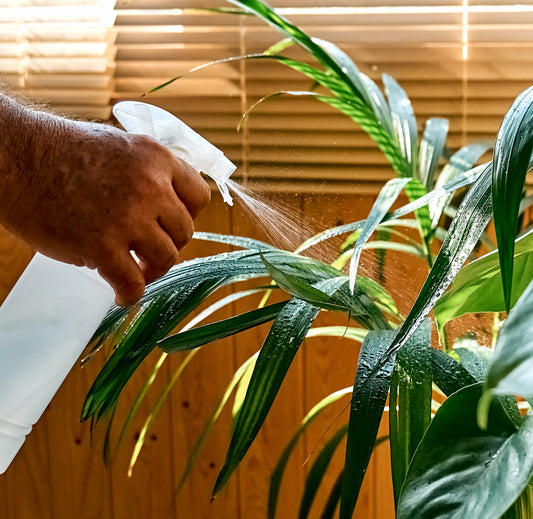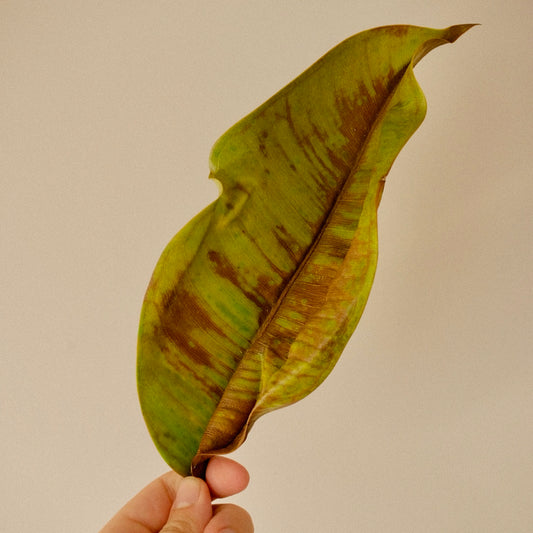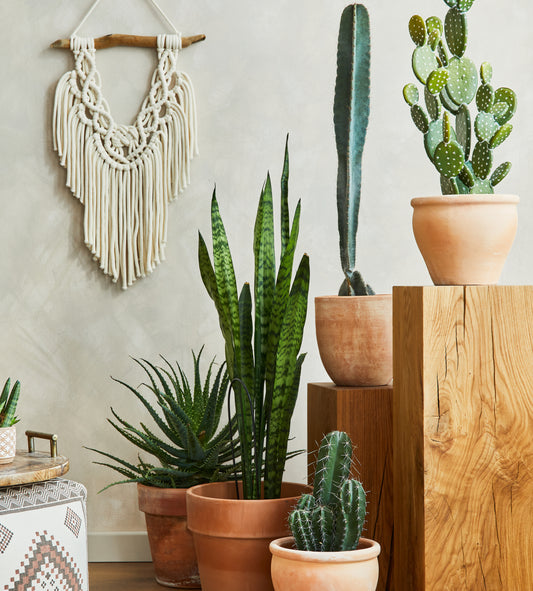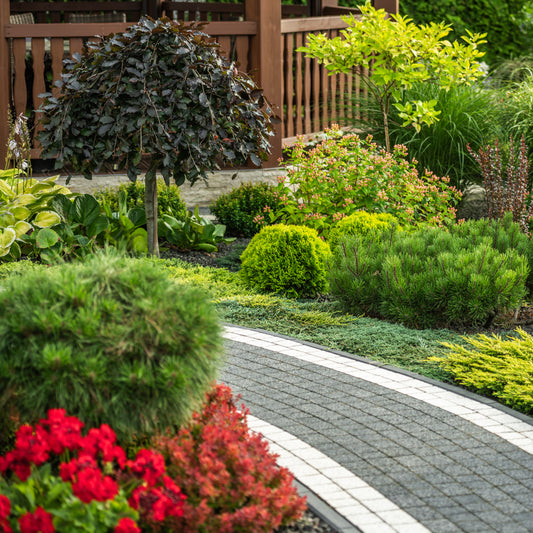Different plants need different amounts of light. For example, cacti like to sit in a spot with a lot of light, while small and trailing plants prefer to be in a shadier spot.
This guide is a brief overview of the relationship between light and houseplants. It discusses some essential concepts about light, like how
The Quick Guide To Three Main Types of Light
The three light requirements plants need are based on where they would rather be outdoors. There are different ways that light can be blocked from coming into a room. We need to think about this when choosing the type of light we want to use indoors.
Where should I put a plant that requires Direct Sun?
Window placement: Directly in the window
Hours of sun hitting the leaves: 8+ hours
Window options:
- South facing window: directly in the window
- West facing window: directly in the window
- East facing window: directly in the window, but this may not be enough light
- North facing window: won't get enough light.
The best place to put a plant that requires direct sun is right in front of a south-facing window. If you don’t have a south-facing window, the next best place would be east or west-facing windows. If no windows are available, the next best thing would be to use grow lights.
Where should I put a plant that requires Bright Indirect Light?
Hours of sun hitting leaves: a few hours of sunlight on the leaves or extremely bright all day.
Window Options:
- East facing window: directly in the window
- West facing window: directly in the window or a bit away from the window.
- South facing window: not directly in the window, to the sides would be best.
- North facing window: directly in the window, but it better not be obstructed.
A plant that requires bright indirect light can go in any window except a north-facing one. The best place for these plants would be east or west-facing window. If you have a south-facing window, the plant should not be placed directly in front of it but to the side of the window instead.
Where should I put a plant that requires Shade?
Hours of sun hitting leaves: 1-3 hours per day
Window options for Shade:
- East facing window: place it directly in the window or close to it
- North facing window: place it directly in the window or close by
- West facing window: place it further away from the window or in a spot where it gets cooler late evening sun.
- South facing window: place it further away from the window where the sun is less intense.
Outdoors they would go under a tree on the north side of a building. Indoors they can do best Away from windows; south-facing windows are okay if the plant is placed further away from the glass. The best place to put a plant that requires shade is on east or north-facing window.
Can plants handle no natural light?
No plant can live without light. They need it to stay alive. Some plants can survive in low light conditions, but they will grow more slowly than plants that get a lot of light. If you don't have any natural light, we recommend using a grow light like our HIGHLIGHT plant light or one of the many other options
What happens if I give a plant too much light?
When a plant gets more light, it will use more water. This is because light helps plants grow and makes them use more water. If you increase how much light a plant gets, you will need to increase how much water you give it.
You should move if your plants suffer from stress and their leaves are burnt. If the leaves are dropping, it might be because there is too much light. But your plant may also be adapting to its new location.
What happens if I don't give a plant enough light?
If you give your plants less light than they need, you will also need to water them less. For example, if you have a zz plant in a dark corner, you would water it once every month or two instead of every week.
Many plants that tolerate low light or live in the shade can survive in conditions with much lower light. If you are giving something that needs direct sun bright indirect light, you might see some leaves drop, and the plant might look limp because it cannot get what it needs to live its best life.
The detailed guide on how light helps your house plants grow
Here is an extremely detailed guide on how to give plants the right amount of light that we put together for our employees
Photosynthesis 101
Light is important for photosynthesis. Photosynthesis is how plants turn sunlight, carbon dioxide, and water into energy. Photosynthesis helps plants to grow and survive.
Photosynthesis is the process that helps plants create their own food. This happens in special parts of plant cells called chloroplasts. Chloroplasts use energy from the sun to help plants grow and stay alive.
Photosynthesis needs three things: light, water, and carbon dioxide. The roots absorb the water from the soil, and the leaves have special cells that absorb light and carbon dioxide.
Sunlight is the best source of light for plants because it has a balanced wavelength. It's composed of seven different wavelengths. The most important ones for the plants are red and blue. These wavelengths help in root development, leaf and flower growth, and water and carbon dioxide regulation.
What kind of light does my plant need?
Houseplants need light close to the conditions found in their natural habitat. Houseplants we grow in our home come from the tropics, where light conditions range from the full sun (six hours or more of direct sun) to full shade (less than two hours of direct sun).
The outdoor sun is different from light passing through a window. Obstructions (e.g., trees, overhangs, eaves, and buildings), seasons, and directional exposure affect the amount and quality of light that our plants get.
It is important to consider the light situation we have at home to match the care requirements of the plants we own.
Directional Exposure
The intensity and duration of sunlight depend on the position of your window or balcony relative to the sun. In the northern hemisphere, the sun rises in the northeast, peaks midday in the south, and sets in the west. This directly affects the amount of light in each directional exposure.
When one of our associates asks about the lighting conditions at home, we are trying to imagine the space at home. Is the plant going to be near the window, off to the side of the window, or a few feet away from the window? Which direction is the window facing? These questions help us match you with plants that will thrive in the conditions you have at home
South-facing Exposure for Indoor Plants
Indirect, bright light to direct light
South-facing exposure receives the brightest amount of light and longest exposure to sunlight. Because of the sun’s path, houseplants in south-facing windows and balconies receive the soft, morning and late afternoon light and bright, midday light.
Without any obstruction, south-facing windows can get more than six hours of direct light. Plants near south-facing windows will receive the bright, direct light. Plants placed beside a window or a few feet away from the window may receive bright, indirect light.
Plants who like a lot of sunlight do well in south-facing exposures. Make sure that the leaves don’t touch the window to avoid sunburn.
West-facing Exposure for Indoor Plants
Indirect, bright light to direct light.
West-facing exposure has some soft light in the early morning but gets intense light in the afternoon. Summer afternoons are particularly more intense than any other time of the year. Be careful of sunburnt leaves for houseplants positioned near west-facing exposures in the summer.
East-facing Exposure for Indoor Plants
Indirect, bright light
East-facing exposure gets the morning sun. The light is softer than south- and west-facing exposures because of the sun's path in the sky. The afternoon provides some shade for the plants. East-facing windows will provide some bright, indirect light in the morning and more shade in the afternoon.
North-facing Exposure for Indoor Plants
Low light to indirect bright light
North-facing exposure receives the least intense light out of all the exposure. It does not receive any direct light, yet it’s soft enough for plants that prefer less sunlight. Plants placed near the window will receive bright, soft, indirect light.
Types of Light
The amount of light necessary for growth and survival varies with each plant. Indoor houseplants are typically divided into three broad categories: low-light, indirect light (medium), and direct light.
Direct Light
Direct light means that the light follows a straight path between the sun and the plant. This also means no obstructions or filters (e.g., sheer curtains) between the sun and the plant. South-facing exposures receive a lot of direct light. West-facing exposure can provide direct light in the afternoons, while east-facing exposure gets a few hours of direct light in the morning.
Plants that like direct light:
- Cacti
- Succulents
- Ficus Elastica (Rubber Plant)
- Ficus Microcarpa
- Ficus Alii
- Strelitzia Nicolai (Bird of Paradise)
- Ponytail Palm
- Jade Plant
- Olea Europaea (Olive Tree)
- Yucca Gigantea
Indirect Light
Indirect light can be a hard concept to understand because of many factors that affect the amount and intensity of light. We must consider obstructions and directional exposure to fully understand indirect light.
For example, an obstructed south-facing window can receive the high end of bright indirect light, while an unobstructed north-facing window can receive the low end of indirect light.
Plants that like indirect light:
- Ficus Lyrata (Fiddle Leaf Fig)
- Alocasia
- Pachira Aquatica (Money Tree)
- Peperomias
- Begonia Maculata
- Syngonium Podophyllum (White Butterfly)
Shade
Shade is a light condition for plants defined as an area with little to no direct sunlight. This can be due to obstructions (buildings, trees, etc.), directional exposure (north-facing windows), or a combination of both.
Plants that require shade can sometimes burn if initially exposed to brighter areas.
- Monstera Deliciosa
- Monstera Adansonii
- Philodendron
- Calatheas
- Maranta Leuconeura (Prayer Plant)
Low Light
Low light means that no direct sunlight reaches your plant. Plants to love low light but many species are well adapted to tolerate it. Spaces in your home that are a few feet away from the window or an obstructed north-facing window can be considered as low-light areas. Although sunlight is needed by all houseplants, there are ones that can tolerate low-light situations.
Plants that can tolerate low light:
- Zamioculcas Zamiifolia (ZZ plants)
- Sansevieria (Snake plants)
- Dracaena
- Epipremnum Aureum (Pothos)
- Spathiphyllum (Peace Lily)
- Aspidistra (Cast Iron plants)
How do I know if my plant is getting enough light?
Too little or too much sun can put a lot of stress on a plant. Fortunately, there are ways to tell if your plant is getting a proper amount of light.
Signs your plant isn't getting enough light:
- Yellowing of the leaves
- New leaves dropping
- Stunted leaf growth
- Faded leaf colour
- Drooping of the leaves
- Weak stems
- Smaller leaves
Signs your plant is getting too much light:
- Brown, crispy leaves
- Dark, burned patches on the leaves
- Dry soil
- Soil dries faster
- Leaves dropping
What can I do when my plant is not getting the light it needs?
The easiest way to fix improper lighting conditions is to place the plant in its desired light conditions. Identify the plant and figure out the light conditions it prefers.
If the plant is getting too much light, consider the following solutions:
- Place the plant further away from the window
- Place the plant off to the side of the window
- Use sheer curtains to soften light passing through the window
If the plant is getting too little light, consider the following solutions:
- Place the plant closer to the window
- Place the plant by the window sill
- Fully open curtains or blinds
- Use grow lights
Grow lights 101
Grow lights are used to supplement or substitute sunlight. Houseplants have adapted to use any available light source to help them grow. Grow lights help plants thrive.
Households are beginning to use grow lights. These lights help plants to grow when there is not enough sunlight. For example, some people put the light near the plant. There are four types of artificial lighting:
Incandescent and Fluorescent Lighting for plants:
Note: Incandescent and Fluorescent lighting rarely provide the intensity or wavelengths required to sustain growth in most plants.
Incandescent lights are the first generation of light bulbs. An incandescent bulb gives off a warm yellow colour when lit. The light comes from electricity running through a filament inside the bulb. Incandescent bulbs are cheaper than any other bulb, but they only last for 750-2,500 hours.
They emit more red wavelengths than blue wavelengths. A mix of incandescent and fluorescent bulbs will help the plants get the necessary red and blue wavelengths for optimal growth.
Fluorescent lights were the second generation of light bulbs. Fluorescent bulbs come in different shapes and sizes. Some have long, thin bulbs, while others are spiral, U-shaped, or circular bulbs. These bulbs use low-pressure mercury vapour to illuminate an area.
Fluorescent bulbs are more expensive than incandescent bulb, but they last longer (between 24,000 to 36,000 hours). Cool white and daylight fluorescent bulbs emit more blue wavelengths than red wavelengths.
A mix of incandescent and fluorescent bulbs will help the plants get the necessary red and blue wavelengths to support plants, but the contrast of warm lighting and cool lighting wouldn’t likely be something you would want to bear.
High-Intensity Discharge Lights, including Metal Halide Grow Lights
These are your old-school grower lights. This is what conventionally was used for most of the last 100 years to produce plants without natural sunlight.
High-Intensity Discharge, or HID light bulbs, are more commonly seen in large indoor spaces (e.g., gyms, warehouses, factories) or outdoor spaces (e.g., parking lots, parks, stadiums).
HIDs have become more popular grow lights than fluorescent bulbs because HID bulbs are more efficient and emit light somewhat closer to the sun. HID set-up is more expensive since it requires an electrical ballast. These bulbs can also exhibit a lot of heat, damaging plants.
These lights can consume and emit extremely high wattage. They consume power at a 1:1 ratio with what they emit. That said, they can put out 1000 watts of light.
In most cases, these lights need to be kept far away from plants because of the heat they give off.
Light Emitting Diode - LED Lights
Light Emitting Diode (LED) - the fourth generation of light bulbs. LED bulbs come in different forms and specifications.
Manufacturers can design LED bulbs to maximize PAR. Each diode can be tailored to emit specific wavelengths, which gives the plant a balanced light.
Unlike HID bulbs, LEDs do not require an electrical ballast to work and can directly plug into an outlet. LEDs do not produce high heat so the risk of leaf burn and plant damage is less likely.
Over the last 10 years we have seen LED technology for grow lights evolve and change with improved quality and technology. Early grow lights often were purple - based on the idea that plants primarily needed blue and red light spectrums. This is why a lot of people associate grow lights with blue and purple colour spectrums.
Some people think that full-spectrum grow lights should have all different colors of light. What is important is that the light in those lights has enough power (measured in PAR) to help plants grow.
While these bulbs are more expensive than older lighting technologies, they have a few major benefits:
- They create more light using less electricity: The biggest benefit of LEDs is actually their efficiency. Depending on the light they can produce the equivalent light of an incandescent, fluorescent, or HID bulb using 10% of the energy.
- They are easier on the eyes in our homes: They can be adjusted to create specific temperatures of light without negatively impacting their ability to support plant growth.
- They produce less heat: Old school grow lights will make you sweat.
What are the differences between grow lights and regular artificial lights?
Artificial lights have been used to grow plants for a long time. Due to recent technological innovations, manufacturers have created grow lights that produce better results than other artificial lights.
Regular artificial lights are primarily used for everyday personal lighting. They illuminate spaces to make things more visible. They are inexpensive and easy to find. On the other hand, grow lights are made to provide better light quality to help plants grow. They are generally more expensive than regular artificial lights since they are made with
Light Spectrum
Figure 2. A diagram showing the photosynthetically active radiation spectrum.
Grow lights emit light within the spectrum called photosynthetically active radiation (PAR). Plants use wavelengths in the PAR range to undergo photosynthesis.
In PAR, there are wavelengths that are invisible to the human eye. Visible light is measured in lumens, which is based on the brightness of a light source. The more light an object gives off, the higher lumens it has. However, it is important to know that brightness does not necessarily mean better light quality for the plant.
Some regular artificial light lacks some of the wavelengths necessary for photosynthesis. For example, an incandescent bulb lacks blue wavelengths within the PAR spectrum. A mix of fluorescent and incandescent bulbs can provide a good balance of wavelengths for plant growth and survival.
What’s the difference between grow lights and natural sunlight?
Studies suggest that grow lights can help plants grow and thrive. It is important to know that sunlight is still plants' best light source. This is because sunlight has other wavelengths that grow lights don’t have. Sunlight is also very dynamic. Weather, clouds, time, and the sun’s position affect the plants differently.
Please note this guide is for people living in the Northern Hemisphere. If you live south of the equator, you'll need to invert this guide from a direction standpoint.




